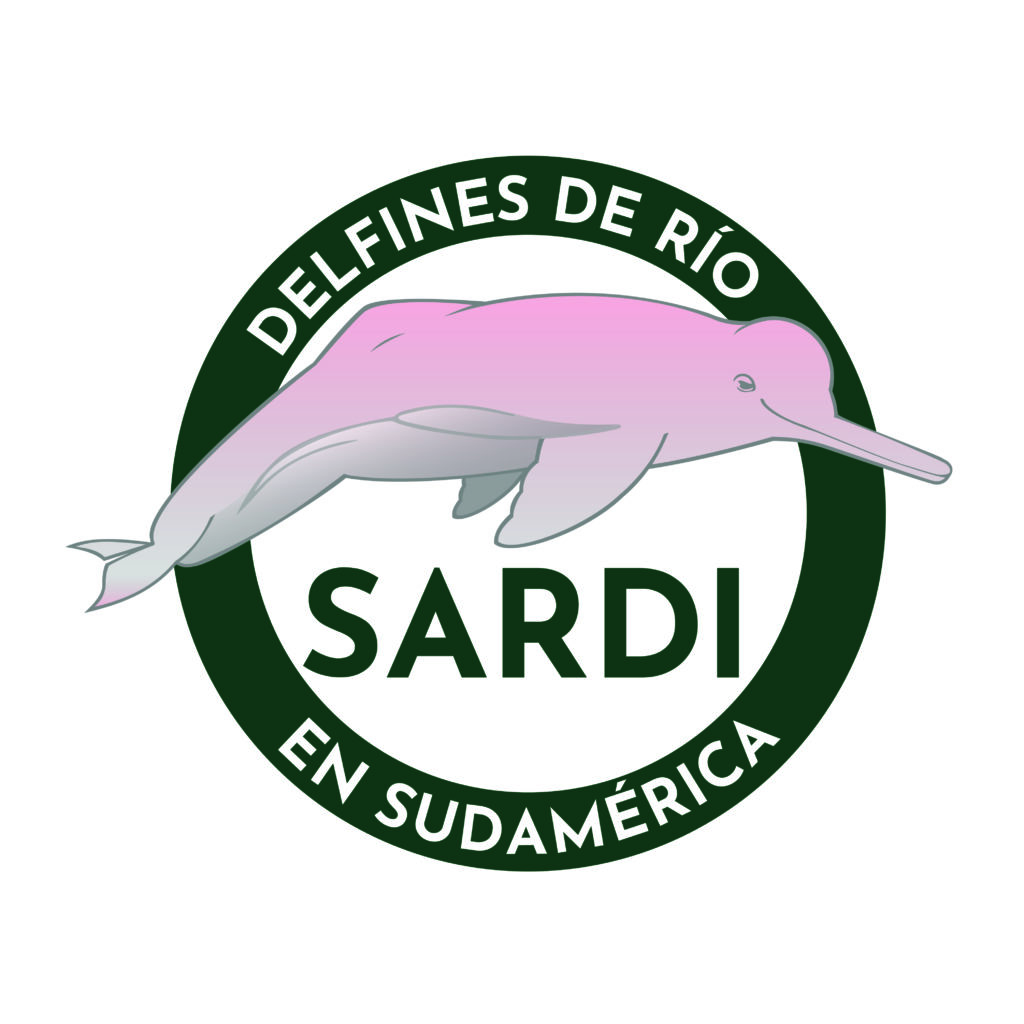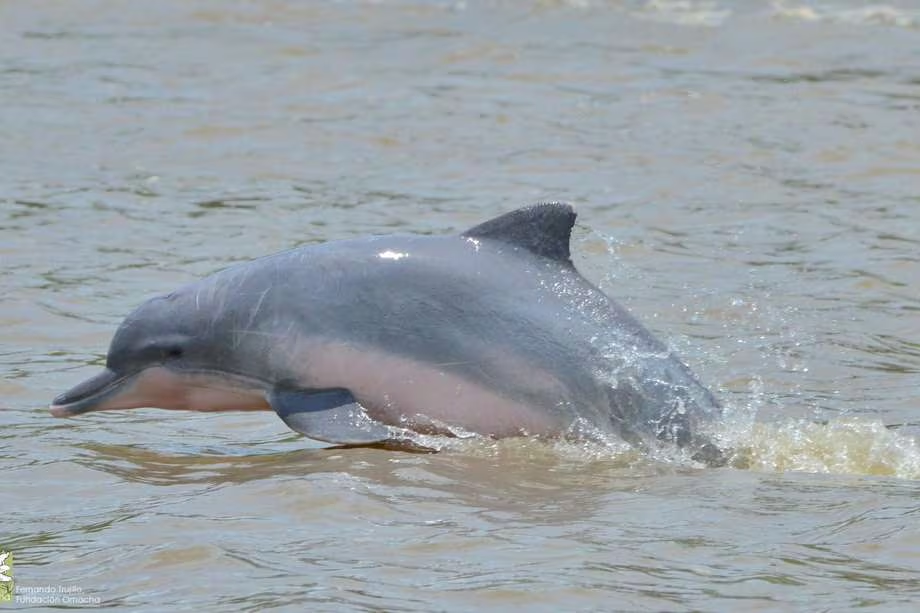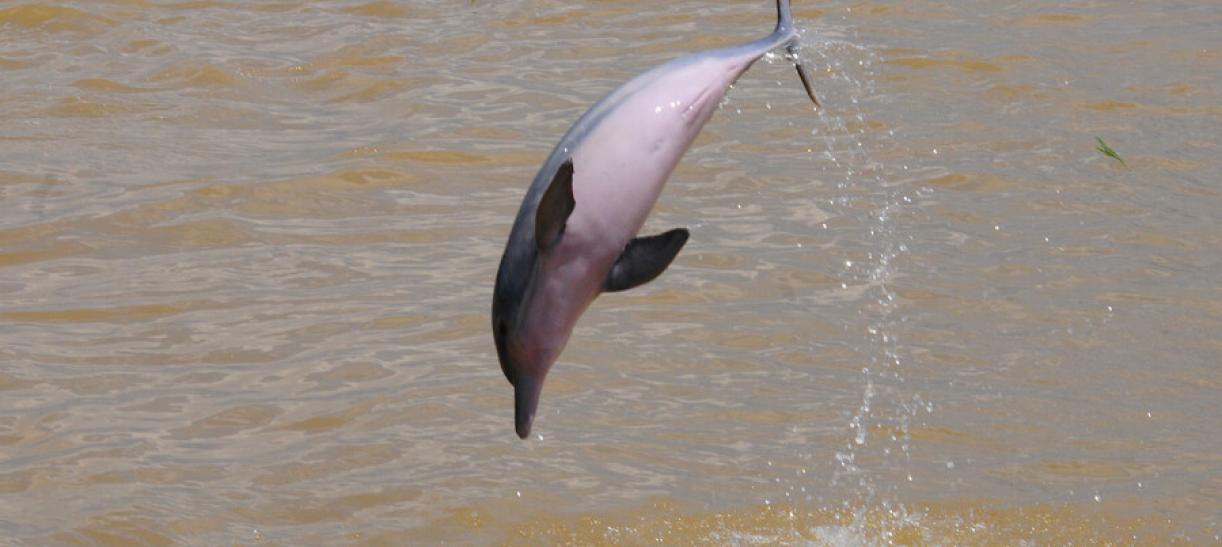The River Dolphin Dashboard gathers data from more than two decades of studies, coalescing information referring to populations of Amazon river dolphins and Tucuxi river dolphins distributed across several Amazonian countries and 47 thousand kilometers of rivers. The South American River Dolphins Initiative’s new tool aims to support researchers, companies and governments in decision-making and planning actions for the conservation of these endangered species and their habitats.
The pink Amazon River dolphin is found in the Amazon and Orinoco River Basins stretching through Colombia, Venezuela, Brazil, Bolivia, Peru, Ecuador and Guyana. Even so, according to Faunagua in Bolivia, the Amazon River dolphin population has suffered a 55% decline just since 2007! The Tucuxi River dolphin is the smaller, grey counterpart to the Amazon River dolphin and is found in the Amazon and Orinoco River basins. The International Union for the Conservation of Nature (IUCN) only recognizes these two species of river dolphins in South America. However, South American scientists defend the recognition of two other species – the Bolivian river dolphin (Inia boliviensis) and the Araguaian river dolphin (Inia araguaiaensis). Data from the Dashboard is also meant to generate information to reinforce the arguments in favor of their international recognition.
The Dashboard is structured in the form of a multi-layered and interactive map. Users can combine these layers to make more detailed interpretations of the available data. Among these layers, there are records related to the distribution of species; data from two decades and 42 dolphin counting expeditions that covered approximately 47000 kilometers of water courses; spots where genetic material was sampled; sites contaminated by mercury; as well as the location of planned hydroelectric dams in the Amazon and the location of protected areas and Indigenous lands within this biome.
“Initially, the Dashboard will only be available in English so that the widest possible number of interested parties around the world can have access to the important data. However, a story map was also produced in Portuguese and Spanish to enable users from South America to have access to more user-friendly and summarized content.” – Marcelo Oliveira, a senior program officer at WWF-Brazil and coordinator of this project.
Researcher at the Mamirauá Institute, Miriam Marmontel, has been studying aquatic mammals for almost 30 years. She said that the wealth of information available through the Dashboard greatly differentiates it from other tools. “This is a very powerful platform. It compiles much of what we know about Amazonian dolphins with more accurate information about distribution, samples of genetic material, threats, and the areas where they are most protected (protected areas and indigenous territories). We can make more qualified analyzes and make better decisions to seek the conservation of these species,” she said.
The information available on the platform is the result of serious and dedicated research and is meant to be used for robust scientific support. “It is very nice that a large group of scientists has decided to share their data, to set up a regional scenario on the conservation status of the species in South America. Ultimately, our goal is for people, companies and governments to understand what problems species are facing and what issues we need to address to ensure the conservation of these animals,” Marmontel continued.
Dr. Mariana Frias of the Aqualie Institute and Federal University of Juiz de For was responsible for compiling the data for the Dashboard. She stated that the amount of information available now allows better science-based conservation decisions to be made: “We can see, for example, where the largest population groups are and where are the areas for the protection of biodiversity. With that, we have a very efficient decision support tool that can serve, for example, to measure whether these areas are actually protecting aquatic species. ”
River dolphins depend on a balanced environment; specifically good quality water and food availability. “Ensuring river water quality and the balance of fish stocks is vital not only for dolphins, but also for the quality of life of the nearly 34 million inhabitants living in the Amazon,” says Fernando Trujillo, Scientific Director of the Omacha Foundation. While dolphins are mammals, they migrate, depend on migratory fish for their food, and are negatively impacted by the same problems migratory fish face.






